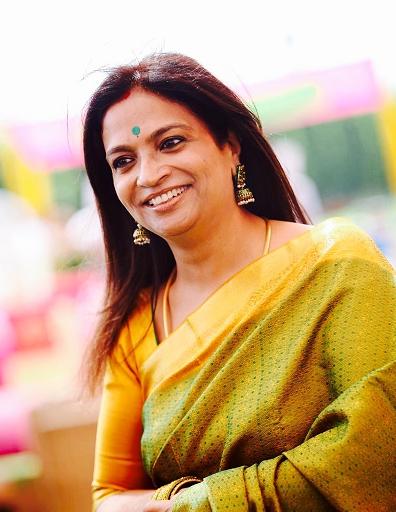THE IMPORTANCE OF THE VEDAS
Scholars around the world have not been able to agree upon assigning a definite date to the Vedas. All other religions have definite historical dates . The Buddha was born 2500 years ago and in his time it was not known when the Vedas came into existence.
His Holiness MahaswamiChandrashekharendraSaraswati of Kanchipuram had said:
The truth is that the Vedas are ‘un-aadi’ and ‘nitya’ Without beginning and without end and eternal, like sound.
According to the Hindu scriptures, there have been several periods of ‘srishti’ (creation) and ‘pralaya’(deluge). The period of each srishti and each pralaya spreads over aeons, infinitely beyond human civilization. The findings of Geology which traces the history of the earth to a period long before the time referred to in The Book of Genesis, confirm the view of cycles of creation and deluge.
The Vedas are the root of Hinduism. Everything else like feasts and festivals are like the fruits and leaves of that tree.
The language of the Vedas remains today the same in form and feature as it was in times beyond our memory.They are not like the common spoken languages that have undergone periodical changes by usage over centuries.
The reason for this is that Vedic chanting has been carefully guarded and not been allowed to lapse from its pristine form. There are definite prescriptions and rules relating to the sound measures, the sequences, manner of utterance etc which have been preserved by oral transmission from generation to generation.
It is very sad that the Vedas were brought to the notice of a vast majority of people in India , the land of the Vedas, through the published works of Western scholars. While we graciously acknowledge these invaluable contributions, we must not forget the primary purpose of the Vedas : to memories and recite correctly with proper enunciation. The Veda mantras so learnt should become the guide for the daily life of a Hindu because it is believed that it is by practicing the Vedic injunctions , we can obtain the grace of God both for individual welfare and that of the world.
‘ Om SarveBhavantuSukhinah’ : a mantra from the Upanishad.
There are four Vedas:
- Rig
- Yajur
- Sama
- Atharva
Each Veda has been classified into four major text types:
- Samhitas: mantras and benedictions
- Aranyakas: ritual, ceremonies, sacrifices and to prepare for a secluded life
- Brahmanas: commentaries on rituals, ceremonies and sacrifices
- Upanishads: texts discussing meditation, philosophy and spiritual knowledge.
There are are six Vedangas: They are the explanatory arms of the Vedas.
1.-Siksha: phonetics, phonology, pronunciation
2.-Vyakarana: grammer and linguistic analysis
3.-Chhandas: the patterns of rhythm and sound in the poetic meters
4.-Nirukta:, explanation of meaning of words and linguistic analysis
5.-Kalpa: instructions on rituals for life events like birth, wedding, death and also duties of an individual in different stages of life.
6.-Jyotisha: auspicious time for rituals. How the stars and heavenly bodies affect human life.
There are four Upaangas:
- Mimamsa: philosophy of rituals and spiritual philosophy
- Nyaya: the law of nature and logic
- Puranas: they speak of the creation of the universe, theology, and human history
- Dharma sastras: guidelines for life and living.
These fourteen are called Dharmasthanas. They sharpen the intellect and purify the soul.
There are four Upavedas:
- Dhanurveda: the science of warfare
- Ayurveda: the science of medicine for the body
- Gandharvaveda: the study of all art forms like music, sculpture, dance
- Sthapatyaveda: architecture and vastu
These four are Vidyasthanas because they deal with nursing the human body and intellect.
Thus with these eighteen: 14 Dharmasthanas and 4 Vidyasthanas, the entire gamut of modern science and arts are covered.
The Vedas are called Sruti which is apaurusheya (eternal and authorless). They are the highest authority.
The Smritis derive authority from the Sruti.
Kalidasa has referred to this in his magnum opus: Raghuvamsa
The Vedangas, Upavedas and Upangas are classified under Smriti.
The Dharmashastras are a part of theSmritis, composed in poetic verses , constituting several commentaries and treatises on duties and responsibilities and ethics.
The Dharmashastras are based on ancient Dharmasutra texts which themselves emerged from the literary tradition of the Vedas. The most important of these texts are the sutras of Apasthamba, Gautama, Baudhyayana and Vashistha.
The Dharmasutras can be called the guidebooks of Dharma as they contain guidelines for individual and social behavior, ethical norms, duties and rights of people at different stages of life, duties of kings , judicial matters and personal law relating to marriage and inheritance.
Most importantly, although our Shastras have provided guidelines on all matters, they have not assumed the compelling force of Law. It has been left to the individual to exercise his free will, following the example of his elders and voluntarily following suit.


